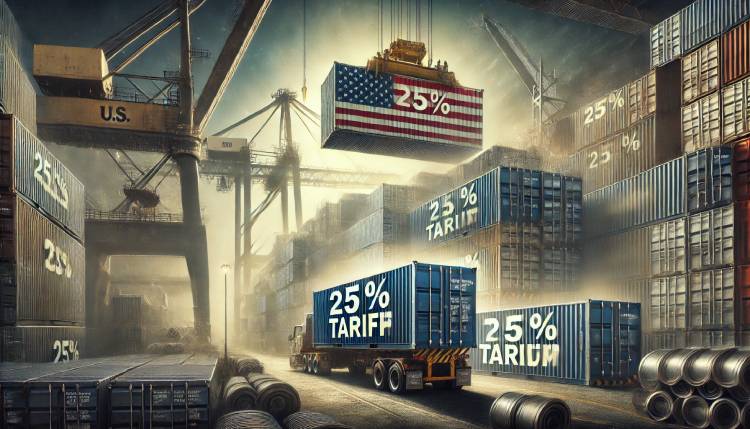Yesterday, President Donald Trump signed executive orders imposing a 25% tariff on all steel and aluminum imports into the United States. This sweeping measure, which applies to all countries without exception, marks a significant escalation in the administration’s trade policy. The tariffs aim to bolster the domestic steel and aluminum industries, which Trump claims have been undermined by unfair international trade practices.
During the signing ceremony at the Oval Office, Trump declared the tariffs as a step toward revitalizing American manufacturing. “This is a big deal, the beginning of making America rich again,” he stated. The president emphasized that these measures are designed to ensure that critical industries like steel and aluminum remain robust and capable of meeting national security needs.
A senior administration official echoed this sentiment, stating that the tariffs would end “rampant exploitation and circumvention” by foreign nations. The official highlighted how some countries have used loopholes to evade existing trade restrictions, such as lightly processing semi-finished steel before exporting it to the U.S.
The announcement has already drawn sharp reactions from key trading partners. Canada, Mexico, and Brazil, some of the largest suppliers of steel and aluminum to the U.S., are expected to feel the immediate impact of these tariffs. European Union officials have also signaled their intent to respond in kind. French Foreign Minister Jean-Noel Barrot warned that the EU would “replicate” any measures imposed by the U.S., while Germany’s Economy Minister Robert Habeck cautioned that prolonged tariff disputes would harm all parties involved.
The move has revived fears of a global trade war similar to what occurred during Trump’s first term in office when he imposed similar tariffs. Economists warn that while these measures may benefit U.S. metal producers in the short term, they could lead to higher costs for industries reliant on imported metals, such as automotive manufacturing and food packaging.
Prime Minister Justin Trudeau warned U.S. Vice-President J.D. Vance that the Trump administration’s planned 25% tariffs would harm both Canada and the U.S., particularly Vance’s home state of Ohio, which heavily relies on trade with Canada. Speaking at a global summit in Paris, Trudeau emphasized that such tariffs are “entirely unjustified,” given the integrated nature of the two countries’ economies and their close alliance. He pledged to work with the U.S. administration and international allies to highlight the negative impacts of these measures, while also preparing a firm and clear response if necessary. Trudeau expressed hope to avoid retaliatory tariffs but assured that Canada would stand up for its workers and industries should a trade war escalate.
The announcement also triggered a mixed response in financial markets. Shares of major U.S. steelmakers surged on Monday, with Cleveland-Cliffs (NYSE: CLF) seeing a nearly 20% increase in its stock price. However, broader market indices remained relatively stable as investors weighed the potential economic fallout from retaliatory actions by other nations.
Despite this initial market optimism for domestic producers, skepticism lingers over whether these tariffs will be fully implemented without exemptions or delays. Analysts point to Trump’s history of using tariffs as a negotiating tool rather than as permanent policy measures.
The new tariffs are part of a broader strategy by the Trump administration to address what it perceives as imbalances in global trade. Over the weekend, Trump hinted at additional “reciprocal tariffs” targeting countries that impose higher duties on U.S. exports than vice versa. “If they charge us, we charge them … every country,” he said while traveling aboard Air Force One.
These measures come on the heels of other recent tariff announcements targeting imports from China and temporary pauses on tariffs for goods from Canada and Mexico. The administration has framed these actions as necessary not only for economic reasons but also for addressing issues like illegal immigration and fentanyl smuggling.
While domestic metal producers may welcome this policy shift, its long-term effects remain uncertain. Critics argue that higher input costs could ripple through various sectors of the economy, ultimately burdening consumers with increased prices. Additionally, retaliatory measures from affected countries could further complicate international trade relations. As this story continues to develop, industries and governments worldwide will closely monitor how these tariffs reshape global supply chains and economic dynamics.

